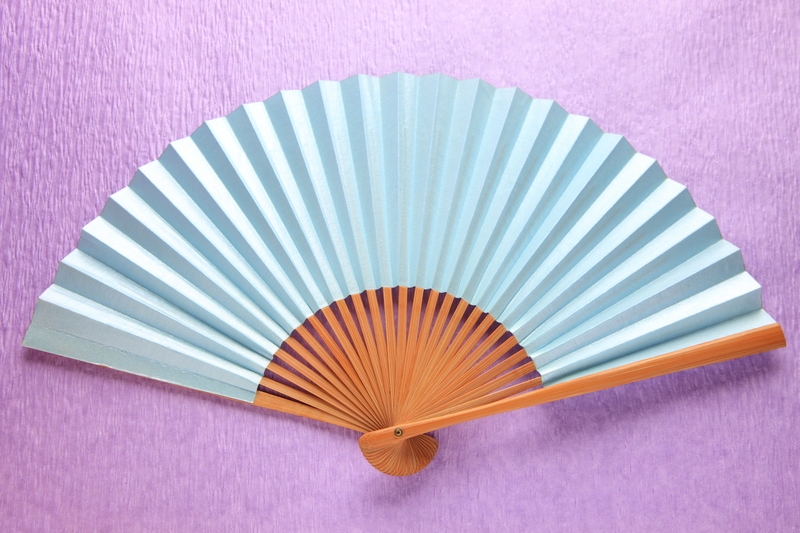Fashion Forward: Innovative Recycling for Old Clothes
As consumer awareness about sustainability grows, the fashion industry is experiencing a transformation. "Fashion Forward: Innovative Recycling for Old Clothes" explores the cutting-edge solutions that are reshaping our approach to clothing waste. Whether you're a conscious shopper or a fashion enthusiast, discover how the latest recycling methods are paving the way for a greener, more stylish future.
Understanding the Need for Clothing Recycling
In today's fast-paced world, trends come and go in the blink of an eye. Unfortunately, this has created an unprecedented amount of textile waste. The fashion industry is one of the largest polluters globally, causing significant environmental damage through both production and disposal. According to The Ellen MacArthur Foundation, the equivalent of one garbage truck of textiles is landfilled or burned every second. Innovative clothes recycling is becoming essential to combat this crisis.
Environmental Impact of Fashion Waste
- Landfill Overflow: Discarded garments take up vast amounts of landfill space, taking years and even decades to decompose.
- Resource Consumption: The production of textiles consumes enormous amounts of water, energy, and chemicals.
- Microplastic Pollution: Synthetic fibers like polyester shed microplastics with every wash, polluting rivers and oceans.
Why Traditional Recycling Isn't Enough
Conventional recycling methods often downcycle clothes, turning them into lower-value products like cleaning rags or insulation. The rise of fast fashion has outpaced these efforts, leading to a desperate need for new, effective, and inspired solutions. That's where innovative textile recycling strategies come into play.

Innovative Recycling Methods for Old Clothes
1. Chemical Recycling: The Breakthrough Approach
Chemical recycling is revolutionizing the field of clothing recycling. By breaking down fibers at a molecular level, this method restores used textiles to their original building blocks, which can then be spun into new yarns.
- Closed-Loop Recycling: This process creates a circular economy, allowing garments to be reborn multiple times without a loss of quality.
- Cellulosic Fiber Innovation: Companies like Renewcell are utilizing innovative recycling for old cotton and viscose clothes, turning them into new textile pulp that apparel makers can use again.
- Polyester Regeneration: Brands such as Worn Again Technologies are perfecting the process of converting old polyester clothes into virgin-quality fibers, drastically reducing the need for fossil fuels.
2. Mechanical Textile Recycling
Mechanical recycling involves physically breaking down fabrics to produce new threads. While traditional, recent innovations have greatly improved this method:
- Blending Techniques: New machinery enables better separation and blending of fibers, increasing the percentage of recycled materials in garments.
- Denim Reinvention: Brands like Levi's and MUD Jeans use advanced mechanical recycling to transform waste denim into high-quality, fashionable jeans.
- Post-Consumer Textiles: Companies now collect, sort, and process worn-out clothing, remanufacturing them into stylish and functional fashion pieces.
3. Textile-to-Textile Recycling
Textile-to-textile recycling offers the possibility of closing the textile loop. By transforming old clothes directly into new fabrics, this method supports a truly circular fashion ecosystem.
- Fibersort Technology: Cutting-edge automated systems now identify and sort garments by fiber type, maximizing efficiency and quality in the recycling process.
- Garment-to-Garment Remanufacturing: Some brands utilize reclaimed textiles to sew new items--think patchwork coats and upcycled designer collections.
4. Biological Recycling: Nature's Solutions
Recent advances in biological recycling harness the power of natural processes to break down old clothes.
- Enzyme-Based Decomposition: Specially engineered enzymes efficiently degrade textile waste, converting it into biodegradable components.
- Mycelium-based Methods: Startups are experimenting with fungi that digest textile waste, producing new materials for the fashion industry.
These nature-inspired methods open the door to a future where fashion waste can literally feed the earth.
Eco-Friendly Upcycling: Breathing New Life into Old Clothes
Creative Upcycling Projects
Another exciting trend in recycling old clothes is upcycling--transforming used garments into fresh, fashion-forward items with unique flair.
- DIY Upcycled Fashion: With some creativity and basic sewing skills, it's possible to turn T-shirts into handbags, jeans into skirts, or sweaters into cozy scarves.
- Designer Upcycling: Esteemed designers like Stella McCartney and Marine Serre are elevating upcycled fashion, debuting chic runway collections crafted from post-consumer textiles.
- Community Workshops: Local initiatives offer classes on mending, repurposing, and customizing old garments, building community while reducing waste.
Art & Function Meet Sustainability
From patchwork jackets to quilted accessories, innovative recycling for used clothes inspires artists and makers to blend aesthetics with ethics. This results in one-of-a-kind pieces that carry a story, reflect individuality, and support the planet.
The Role of Brands, Retailers, and Consumers
Fashion Industry Initiatives
Recognizing the urgent need for change, many major labels and retailers are spearheading their own clothes recycling programs:
- Take-Back Schemes: Global brands like H&M, Zara, and Patagonia encourage customers to return unwanted garments for responsible recycling.
- Innovative Materials: Brands are investing in recycled polyester, regenerated cotton, and eco-friendly dyes to reduce their environmental footprint.
- Re-Sell and Rental Platforms: Clothing resale apps like Depop and The RealReal, and rental services such as Rent the Runway, champion fashion circularity by extending the life of garments.
What Can Consumers Do?
Sustainable fashion starts at home. Everyone plays a key role in transforming the industry. Here's how you can embrace fashion recycling innovations:
- Buy Less, Choose Wisely: Invest in quality garments that last longer and can be easily repaired or upcycled.
- Donate or Swap: Give old clothes a new chance by donating them to charities, or participate in clothing swaps in your community.
- Support Recycled Fashion: Purchase from brands that use recycled materials or practice transparent supply chain ethics.
- DIY Projects: Try your hand at home upcycling to create unique, personalized items.
- Proper Sorting: Make sure to separate clothes by material before taking them to recycling or donation centers. This helps facilitate efficient recycling processes.
Future Innovations in Clothing Recycling
The horizon of innovative clothes recycling is vast, with exciting developments emerging every year. As technology, policy, and consumer behavior evolve, expect these trends to shape the future:
1. Advanced Fiber Identification and Sorting
AI-powered sorting facilities use optical sensors and machine learning to instantly recognize fiber content, vastly improving the accuracy and efficiency of recycling operations.
2. Blockchain and Traceability
The integration of blockchain technology enables complete transparency in the lifecycle of textiles, from raw materials to post-consumer recycling. This builds trust and accountability within the industry.
3. New Materials and Bio-fibers
Research labs are developing biodegradable and compostable fibers, such as spider silk protein and seaweed-based yarns that don't pollute the planet when discarded.
4. Decentralized Micro-Recycling Facilities
Local, modular recycling hubs equipped with 3D printers and weaving machines give communities the power to close their own textile loops, creating local jobs and reducing transportation emissions.
5. Policy and Incentives for Change
Governments are offering tax breaks, subsidies, and extended producer responsibility (EPR) legislation to encourage brands and innovators to invest in recycling infrastructure and circular design.

Barriers and Challenges: What's Holding Fashion Recycling Back?
- Mixed Fibers and Blends: Many clothes are made from a mix of fibers which are difficult to separate and recycle efficiently.
- Contamination: Zippers, buttons, and attached decorations can complicate automated recycling processes.
- Cost: Advanced recycling technologies often require significant investment and are not yet accessible worldwide.
- Consumer Awareness: Not all shoppers know about recycling options for old clothes or the impact of textile waste.
- Lack of Standardization: Many countries have no consistent guidelines on textile recycling or collection.
Conclusion: Dress for the Planet, Not Just for the Trend
Fashion forward recycling for old clothes is much more than a sustainability trend--it's a vital movement shaping the future of style, industry, and our planet. By embracing innovative recycling solutions, supporting circular fashion, and making conscious choices, we empower a next generation where clothing waste is minimized and creativity flourishes.
Whether your wardrobe needs a refresh or you're simply passionate about green living, take action. Donate, upcycle, choose recycled materials, and support companies driving change. Fashion may be ever-changing, but our responsibility to the environment is always in style.
Further Reading & Resources
- Ellen MacArthur Foundation - Fashion and the Circular Economy
- Global Fashion Agenda
- Fashion for Good - Innovation in Sustainable Fashion
If you found this guide to innovative recycling for old clothes informative, share it with friends and help spread the word for a more sustainable, fashion-forward world!